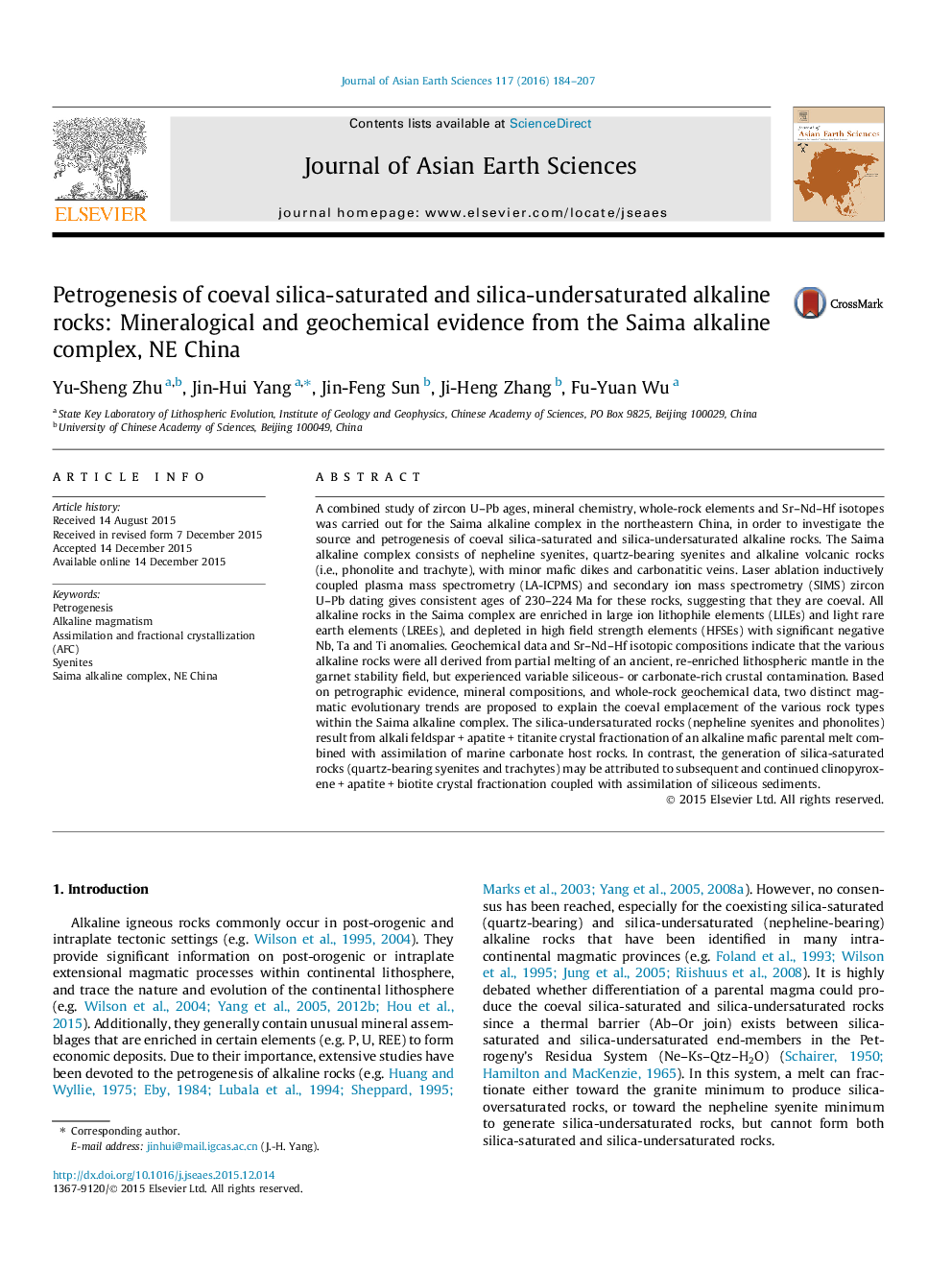| کد مقاله | کد نشریه | سال انتشار | مقاله انگلیسی | نسخه تمام متن |
|---|---|---|---|---|
| 4730184 | 1640354 | 2016 | 24 صفحه PDF | دانلود رایگان |

• Triassic nepheline and quartz syenite, volcanic rocks and carbonatite in NE China.
• An enriched subcontinental lithospheric mantle source for the Saima alkaline rocks.
• Mineral components and whole rock geochemistry show AFC processes.
• Petrogenesis of coeval silica-saturated and silica-undersaturated rocks.
A combined study of zircon U–Pb ages, mineral chemistry, whole-rock elements and Sr–Nd–Hf isotopes was carried out for the Saima alkaline complex in the northeastern China, in order to investigate the source and petrogenesis of coeval silica-saturated and silica-undersaturated alkaline rocks. The Saima alkaline complex consists of nepheline syenites, quartz-bearing syenites and alkaline volcanic rocks (i.e., phonolite and trachyte), with minor mafic dikes and carbonatitic veins. Laser ablation inductively coupled plasma mass spectrometry (LA-ICPMS) and secondary ion mass spectrometry (SIMS) zircon U–Pb dating gives consistent ages of 230–224 Ma for these rocks, suggesting that they are coeval. All alkaline rocks in the Saima complex are enriched in large ion lithophile elements (LILEs) and light rare earth elements (LREEs), and depleted in high field strength elements (HFSEs) with significant negative Nb, Ta and Ti anomalies. Geochemical data and Sr–Nd–Hf isotopic compositions indicate that the various alkaline rocks were all derived from partial melting of an ancient, re-enriched lithospheric mantle in the garnet stability field, but experienced variable siliceous- or carbonate-rich crustal contamination. Based on petrographic evidence, mineral compositions, and whole-rock geochemical data, two distinct magmatic evolutionary trends are proposed to explain the coeval emplacement of the various rock types within the Saima alkaline complex. The silica-undersaturated rocks (nepheline syenites and phonolites) result from alkali feldspar + apatite + titanite crystal fractionation of an alkaline mafic parental melt combined with assimilation of marine carbonate host rocks. In contrast, the generation of silica-saturated rocks (quartz-bearing syenites and trachytes) may be attributed to subsequent and continued clinopyroxene + apatite + biotite crystal fractionation coupled with assimilation of siliceous sediments.
Journal: Journal of Asian Earth Sciences - Volume 117, 1 March 2016, Pages 184–207